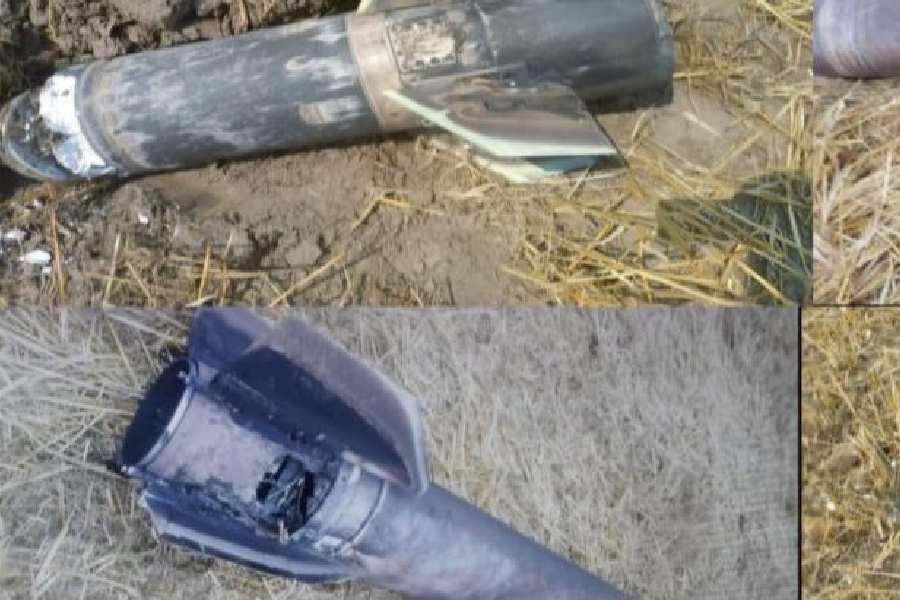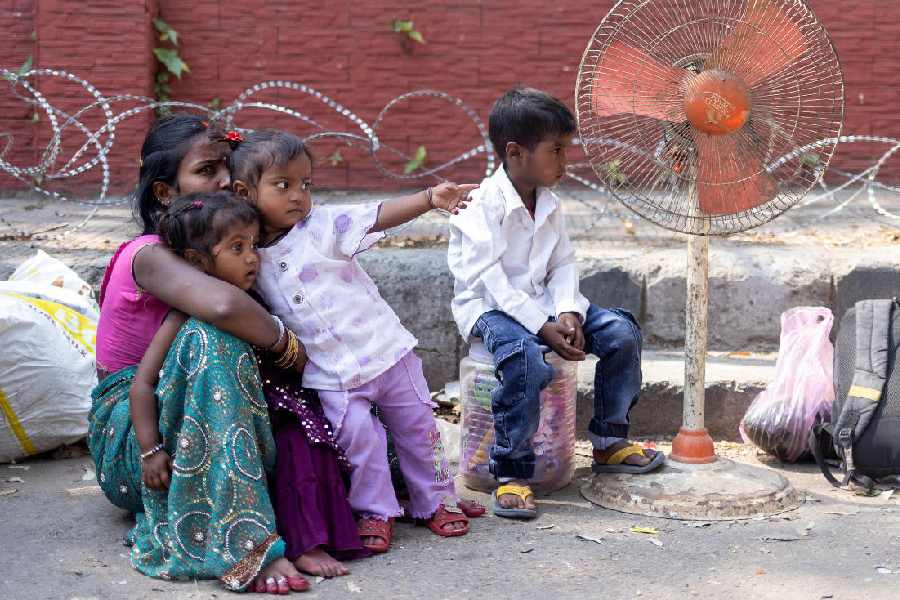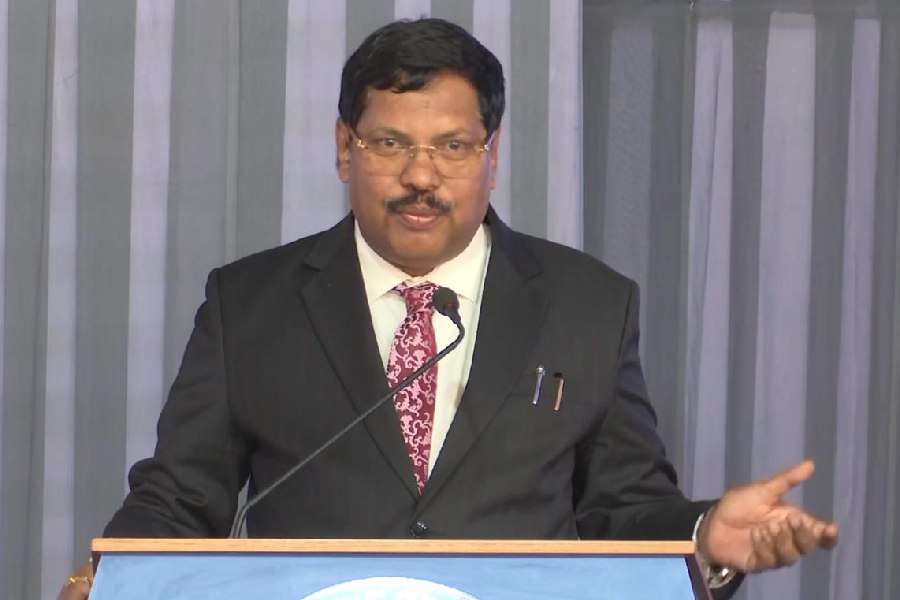 |
| Manju Dey and Kali Banerjee, who played Wong Lu, during the shooting of Neel Akasher Nichey |
 |
| Sax Rohmer’s famous Dr Fu Manchu crime novels transformed them (the Chinese) into a race of crafty devils like the Oriental villain of the piece, highly intelligent but of unregenerate wickedness |
in the mid-seventies, when Bruce Lee had just turned every young Indian male into a high-kicking kung fu star making the appropriately incomprehensible noises as he dealt imaginary deathly blows, a young Chinese tough from Bow Barracks used to be the cock-of-the-walk of the entire Bowbazar area. And for good reason too. Lithe of body, he could single-handedly keep at bay an entire mob of cut-throat-wielding and bomb-throwing rowdies, with sodawater bottles as his only weapon. When these brawls erupted in front of Orient cinema in Bentinck Street, silence would suddenly descend on the busy thoroughfare and all shops would down their shutters. Only the hapless paanwala would watch helplessly as the scamp helped himself to the bottles of soft drinks and broke them into smithereens.
All this stopped once cinemas and the entire scalping racket went bust. The Chinese tough, subsequently, went away to Taiwan. I heard the other day that recently when he came to spend a holiday on his former turf, he had turned into an unrecognisable middle-aged man, the very picture of respectability.
In my long association with the local Chinese community, this was the only instance I have ever come upon of any character trait that could even remotely be associated with the racist label of the Yellow Peril so unfairly put on peoples known for their industriousness and skill.
When the Chinese began settling down in London, Cardiff and Liverpool in the UK in the late 19th century, they faced a groundswell of hostility. Sax Rohmer’s famous Dr Fu Manchu crime novels transformed them into a race of crafty devils like the Oriental villain of the piece, highly intelligent but of unregenerate wickedness.
No doubt inspired by Rohmer, our homegrown Conan Doyle, Niharranjan Gupta, introduced Chinese villains in his shilling shockers whose adjectival excesses and onomatopoeic ornamentation have entertained generations of Bengalis. In his Raktamukhi Dragon (a Deb Sahitya Kutir publication recommended in the Calcutta Gazette of March 31, 1941, as a prize and for libraries by the education directorate) detective Kiriti Roy is pitted against devil incarnate Dr Wong, and ultimately defeats his plot to exterminate the power-hungry West through biological warfare and establish a utopia.
But in Mrinal Sen’s first feature, the warm human document entitled Neel Akasher Nichey, made in 1957, actor Kali Banerjee turns into Wong Lu, a peddler of brightly printed China silk, a deeply emotional man who establishes an unlikely rapport with a Bengali woman (Manju Dey) from the day she calls him bhai.
As he walks around in his three-quarter length pyjamas, tunic with frogs, sola hat on head and wares on shoulder, children pursue him screaming: “Chineman changchung malaika bhatt.” Played sympathetically by Banerjee, the quasi-fictional character never dwindles into John Chinaman of caricatures. Based on a short story by poet Mahadevi Varma, the film is set in the Thirties, when Calcutta was rocked by the swadeshi movement.
Mrinal Sen says when he used to wonder about Chattawala Gali and Phears Lane, he never really felt threatened. But he never wanted to depict the seamier side of Sino life. Yet he had encountered “people in a stupor”. And on Chinese New Year’s day, clashes would inevitably break out during the dragon dance between the denizens of old Chinatown who were from Formosa, and those from Tangra who represented New China.
The Indian Chinese Association for Culture, Welfare and Development is surprisingly honest on this score. After telling the story of how the first Chinese set themselves up near Budge Budge at the time of Warren Hastings, their 2001 “diary” tells how opium and gambling used to be the two major vices of this community that flourished till the late Fifties, and how gang wars would break out here.
Augustus Somerville, who lumped all Orientals, including Indians, with the criminal classes, has left behind an account of his visit to Chinatown round about the Roaring Twenties in Crime and Religious Beliefs in India. He describes a chow shop as one room divided into three lit by a “vile-looking oil lamp” suspended from the ceiling. He makes a fool of himself at roulette.
In the opium den, the only furniture is rags or mats for the addicts. “In one corner, seated on a low stool, with a tray full of pipes before him, a small uncovered lamp and a little China pot, in which he keeps the opium, sits the proprietor. As you enter, he heats some of the opium, fills one of the pipes, lights a long taper and then hands them both to you.”
Pennsylvania University has in its collection an album compiled by an unknown GI who visited Calcutta in 1947. It shows the addicts with skeletal limbs. The caption reads: “…Actually the smokers do it legally. Each den is licensed for so many pipes. Each pipe costs a rupee, a phial of opium Rs 5. Average smoker consumes a phial a day and there are about 186 pipes licensed in Calcutta.”
Of course, when the Calcutta Improvement Trust went on a building spree in the Sixties, Chinatown was wiped out of the map and almost from memory. The temples need to be repaired, but they are the only remnants of Chinepara. The balcony of Sea Ip temple adjoining Poddar Court has acquired a bilious green fibre glass roof but the ancient weaponry and altar are still gorgeous. Carved wood painted gold comes alive with the figures of human beings, pheasants, crabs, and horseriders, each form seemingly endowed with a life of its own. The idols wear marigold garlands, Hindu style. Sea Voi Yune Leong Futh Church (the club has a Sun Yatsen blow-up) and Gee Hing Church in Blackburn Lane look equally opulent, dusty though they are. The former has a suite of exquisitely carved chairs inlaid with marble.
Although their numbers are dwindling every year and the leather kings of Tangra are giving up in despair, we still have a laundry lord in Shanghai of Russell Street. And Chinese weddings with their 10-course dinners are truly made in heaven.









